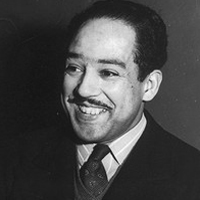Ballad of the Landlord by Langston Hughes: Summary and Critical Analysis
Ballad of the Landlord is one of the outstanding poems of Harlem Renaissance poet Langston Hughes in 1940. The epoch of 1940s is an era of inhuman discrimination to the people of African roots. Racism and discrimination are the major themes in this poem that the poet Hughes wants to cater.

Langston Hughes (1902-1967)
The ballad opens in an imaginary situation, where the tenant is making a complaint against the landlord. There is a hole on the roof of the house. The landlord has already been informed about it. The steps have been broken down. But when the landlord comes up, he does not fall down. When the black tenant demands of repairing of the roof and the stairs, the landlord threatens him of expelling from the room throwing of the furniture. The landlord says that the tenant has to pay him ten dollars. But before the landlord repairs the house, he will have got more than that.
Will the landlord get expulsion orders from the court to expel the tenant and throw his furniture in the street? But he talks about high moral standards. If the tenant lands his fist on him, he will not be able to say a word. Then the landlord will inform the police and get the man arrested, saying that the man is challenging the law and order. The police will follow and arrest him. He will be taken to the police station and kept in a small room inside the jail. The next day there will be the headlines in the paper: Man threatens landlord; Tenant had no money; Negro is sentenced 90 days’ imprisonment.
The poem is trying to show the extent of social injustice in America. The tenant is exploited by the landlord and the police and the court help landlord to exploit the tenant more. But the tenant gets help from nowhere. What he can do is to use his own force. This is a protest poem. It encourages the tenants to fight against the landlord. The landlord just takes the rent, but he does not repair the house. If he does something to protect himself, he is arrested and imprisoned. The police, the court and the press don’t take the side of the tenant. The poem powerfully raises a strong voice against color discrimination in America. The landlords are Whites, so are the police and the judges. Even the presses do not write impartially. The papers are the mouthpiece of the Whites. By using the simple colloquial language of the Blacks, the poem conveys the deep feelings of the Negroes.
This poem is a subtle charge against the racial discrimination in the United States of America. In the USA, ordinary events of life like the relationship between the landlord and the tenant-the white tends to discriminate against the black. So the black poet Hughes is inspired to pour his anger through the medium of the poem. He ironically gives the title of the poem ‘Ballad of the Landlord.” He presents precise details of insignificant events like the leakage of the roof and the broken steps. He is mocking at the very idea of communal equality in the USA.
This poem is dramatically opened and dramatically ended. Hughes uses colloquial language to express his ideas. By imagining the coming of the police, his arrest and consequent headlines in the press he creates an atmosphere of immediacy and dramatic intensity. The lines of the poem are made long and short to indicate the changing moods of the narrator. The expression of the poem is strikingly new and it goes straight to the heart of the audience. Ironically, Hughes hero in this ballad is not the landlord according to the title of the poem, but the tenant who raises voices for the injustice done to him.
Cite this Page!
Sharma, K.N. "Ballad of the Landlord by Langston Hughes: Summary and Critical Analysis." BachelorandMaster, 12 Nov. 2013, bachelorandmaster.com/britishandamericanpoetry/ballad-of-the-landlord.html.
